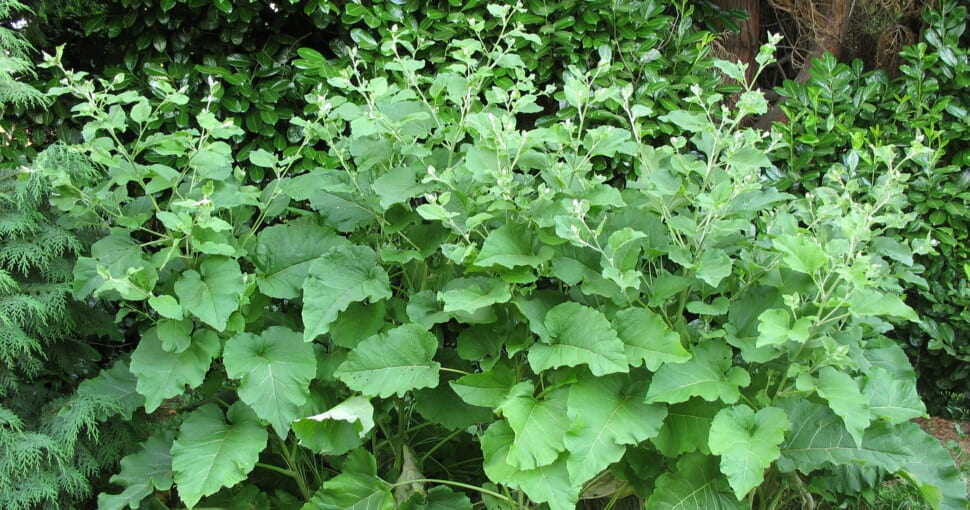Man has a love-hate relationship with burdock. The whole plant is an excellent source of food and medicine. It is even planted as an ornamental garden plant. But ask sheep or cattle farmers about burdock, and they will advise you that it is a weed. So, is burdock a friend or a foe?
When folks refer to burdock, they usually mean greater burdock (Arctium lappa). There are, however, fifty-six species of burdock, each with slightly different characteristics. You may also have heard of plants with names like beggar’s button, snake’s rhubarb, and thorny burr. These names all refer to the burdock plant, which is native to Europe and Asia and belongs to the Asteraceae plant family.
Burdock was the inspiration for the loop and hook fastening system. This fastener design is based on the hooks of the burdock burr. The burr is also likely the reason for the spread of this plant worldwide, as it hitched a ride as a stowaway in crops or embedded in the fur of livestock.
The taproot of young burdock plants is a popular food source, especially in East Asia and among wild food foragers. Burdock root contains the prebiotic called inulin. Inulin is a healthy fiber source for anyone with diabetes as it does not trigger a glycemic response. Inulin can also assist with restoring gut health.
Burdock seems to have good and bad attributes, but what else looks like a burdock plant?
1. Velvetleaf
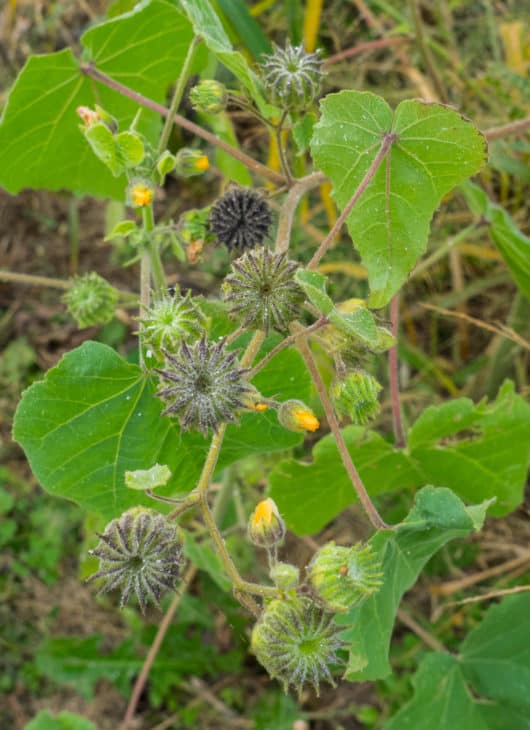
Velvetleaf (Abutilon theophrasti) may be more familiar to you by names like Chinese jute, buttonweed, Indian mallow, or butterprint. Velvetleaf is a member of the Malvaceae plant family and is native to Southern Asia. As is the case with burdock, velvetleaf has many pros and cons.
Velvetleaf plants can grow up to eight feet in a single season and have a similar stem structure as burdock. Velvetleaf leaves have heart-shaped leaves that grow about eight inches long and attach to the plant via long leaf stems. Both burdock and velvetleaf plants have hairy leaves.
Unlike burdock, the velvetleaf flowers are yellow. The plant can produce as many as forty thousand seeds per plant. Velvet leaf can cause huge crop losses due to these plants outcompeting crops for water and nutrients.
In China, velvetleaf is planted to produce food, medicine, and fiber. The seeds and leaves are edible parts, and in addition, the leaves are used medicinally. The stems are used to produce bast fiber and to make rope, nets, and paper, among other things.
2. Cocklebur
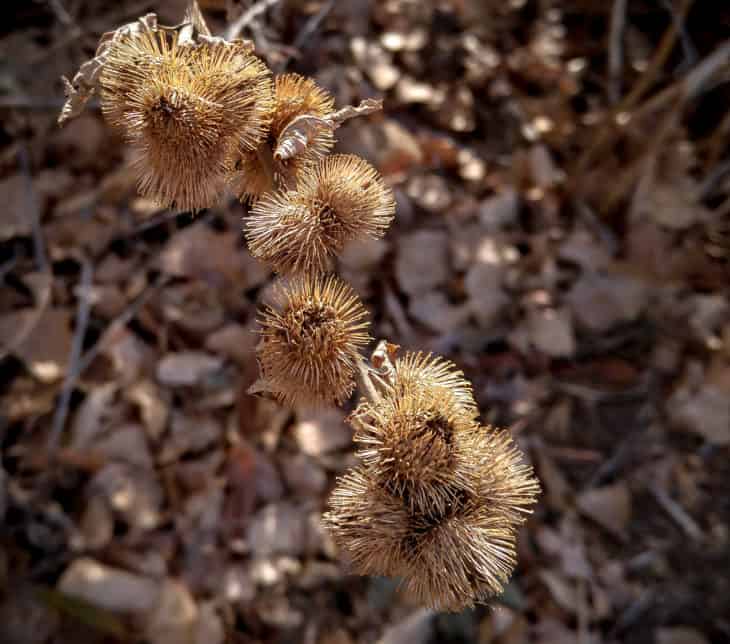
Cocklebur (Xanthium strumarium) is often called clotbur, donkeybur, or heartleaf. This member of the Asteraceae plant family is native to the Americas and parts of Asia but is now recognized as an invasive species across the globe.
There is a strong resemblance between burdock plants and cockleburs. Cocklebur leaves are heart-shaped, and the stems may be purple, as with burdock plants. Cocklebur plants are smaller than burdock at four feet tall but could easily be mistaken for a first-year burdock plant.
Cocklebur flowers are also purple and thistle-like but much smaller than burdock flowers. Both plants have taproot systems that can grow two to four feet deep. Cocklebur seed burs stick to animal fur to distribute the seeds but are a little easier to remove than burdock. The cocklebur burs are firm and do not break when you try to remove them.
3. Rhubarb
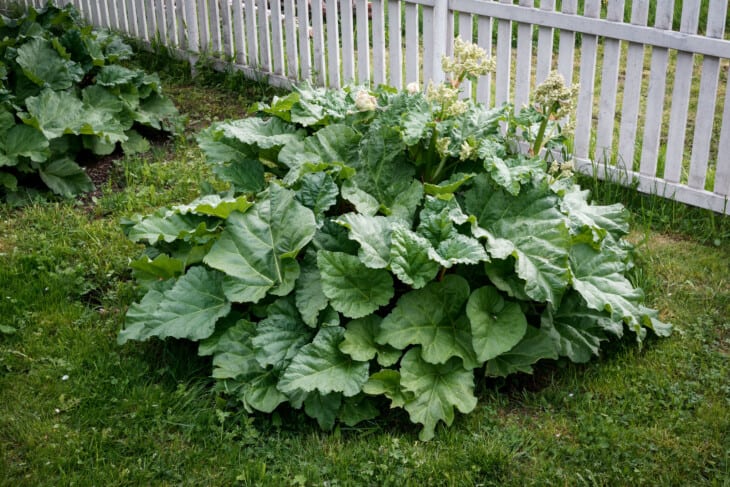
Rhubarb (Rheum rhabarbarum) is also called pie plant among cooks and is a member of the Polygonaceae plant family. Rhubarb hails from Siberia. Rhubarb’s Latin name indicates the region where it grew along the Rha river. The Chinese have also used it medicinally for over five thousand years, so this plant has a rich history.
Rhubarb is a perennial plant that dies back each winter, and early in spring, new large, green, heart-shaped leaves emerge. Rhubarb leaves can grow one to two feet long and look similar to a first-year burdock plant. In the first year of growth, the burdock produces leaves from a basal rosette and lacks a stem, just like a rhubarb plant.
Burdock stems sometimes have a purple or red coloration on the stems. Rhubarb stems are fleshier and have more red coloration than burdock, though. Unlike burdock, rhubarb leaves are not edible due to containing high amounts of oxalic acid.
Like burdock, rhubarb is highly regarded as a medicinal plant. In fact, the Chinese used to trade rhubarb, like tea, as a cure for fevers and stomach aches long before it was used to make pies.
4. Common Foxglove
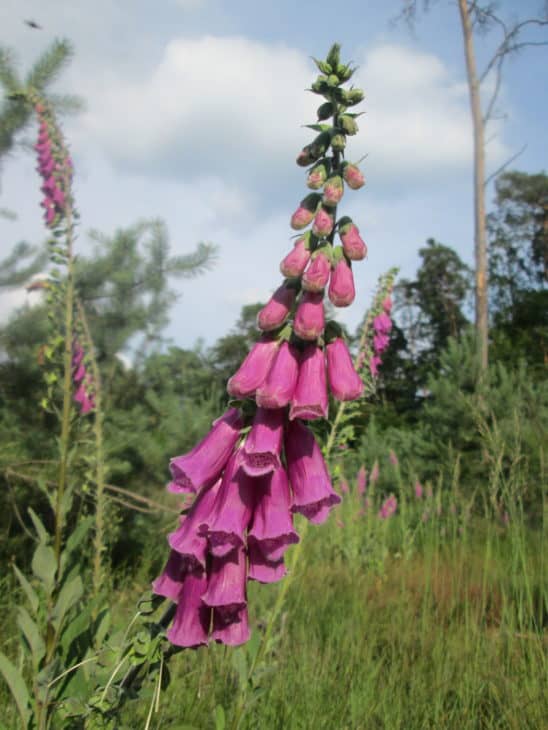
Common foxglove (Digitalis purpurea), also called dead men’s bells, witches’ gloves, or goblin gloves, belongs to the Plantaginaceae plant family. These beautiful flowering plants pack a deadly punch but, used correctly, serve as medicine. Foxgloves are native to Europe, Africa, and Asia but are common on most continents today.
Foxglove grows as a biennial plant, only producing the long flower stem in the second year. In the first growth year, foxglove leaves grow as a spiral from a central point, like a burdock. While the foxglove leaves are narrower than burdock, they can be as long as thirteen inches and resemble burdock leaves. Both plants’ leaves have a hairy covering, which can add to the confusion.
Foxgloves will not be mistaken for burdock once they have flowers. Foxglove has beautiful bell-shaped flowers. These flowers are why many gardeners plant this toxic plant. The most popular flower color is purple, but there are white and yellow varieties.
Foxglove has been used medicinally for many years by herbalists for conditions ranging from tuberculosis to epilepsy. The wrong dosage of this potent plant could cause heart attacks because of the cardiac glycosides that foxglove contains. Foxglove is a heart medicine in modern medicine, but it is best to leave it to the professionals rather than taking the wrong dosage.
5. Butterbur
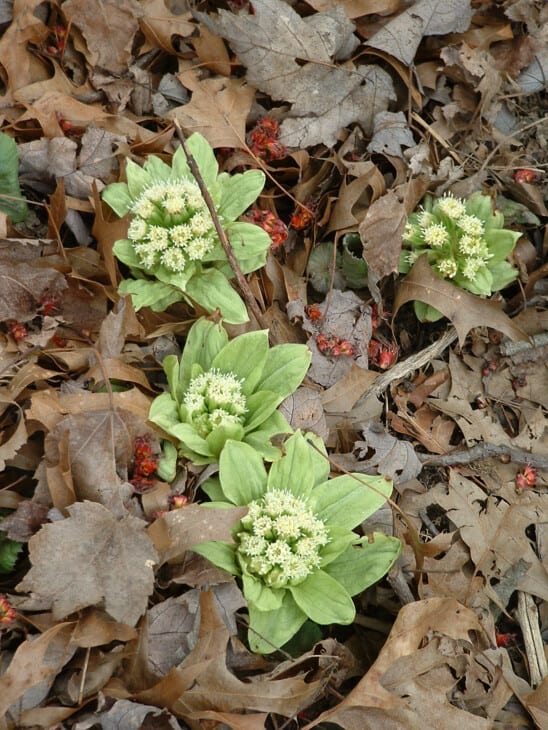
Butterbur plants (Petasites japonicus) are called sweet-coltsfoot, pestilence wort, and butterfly dock. The butterbur plant is native to China, Korea, and Japan but is naturalized in Europe, Canada, and North America. This perennial plant belongs to the Asteraceae family and is either loved or hated like burdock.
Butterbur leaves are round or heart-shaped and one to two feet across. Before they produce the flower stem, these plants can look very similar to burdock. Both burdock and butterbur have a hairy leaf covering, especially on the underside of the leaves. Butterbur flowers are pink or purple, and male flowers are produced on a different plant than female flowers.
Like burdock, butterbur is used as food or medicine, but if used incorrectly, butterbur can cause liver damage. In order to remove harmful alkaloids, the butterbur shoots are first soaked in baking soda or potash. Butterbur is only safe to eat after this leaching process. Butterbur spreads prolifically by means of the rhizomes, so harvesting the shoots for food can keep this plant in check.
Butterbur has long been used to treat fevers, migraines, and asthma. Butterbur is being tested for use in modern medicine as an aid for conditions like allergic rhinitis, urinary tract infections, and upset stomachs.
6. Sea Dock
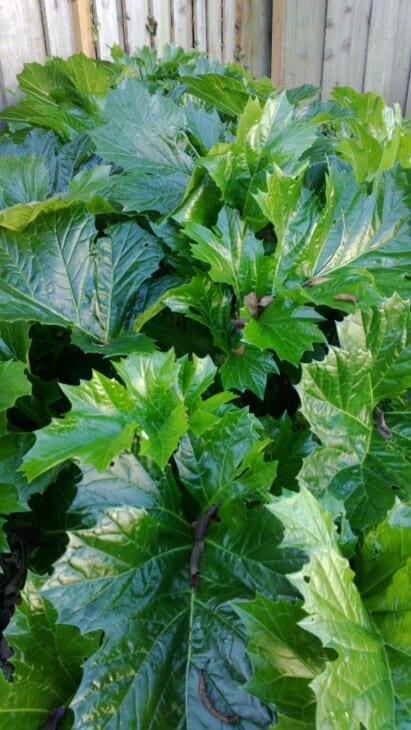
You may also know the sea dock plant (Acanthus mollis) by names such as sea holly, bear’s foot, oyster plant, or bear’s breeches. Sea dock is a perennial plant from the Acanthaceae plant family and is native to the Mediterranean region. Sea dock has a firm footing in Roman and Greek architecture as the leaves inspired the Corinthian leaf motive found in many historical sites.
The large sea dock leaves can be twenty inches long and grow from a central base in a rosette formation. The leaves have toothed edges but can be mistaken for burdock when young. Sea dock flowers resemble a snapdragon flowers, but they are much larger. The flowers are white with a purple hood.
Like burdock, the sea dock plant has medicinal benefits that may account for its global spread. Sea dock is also a much-loved garden plant as it is bee and bird-friendly and a hardy plant that tolerates many different soil conditions.

